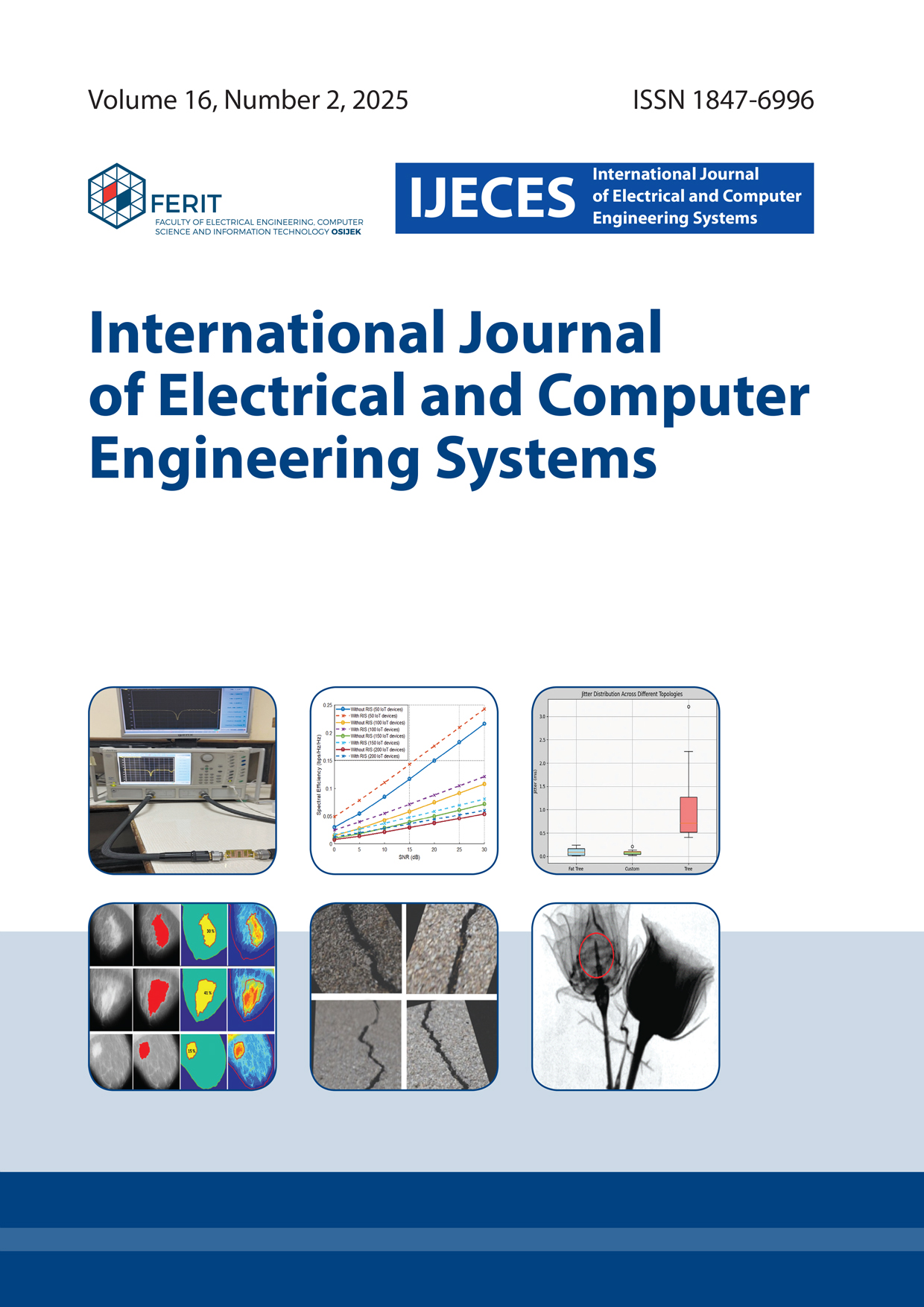Reconfigurable Intelligent Surfaces in 6G mMIMO NOMA Networks: A Comprehensive Analysis
DOI:
https://doi.org/10.32985/ijeces.16.2.8Keywords:
Internet of Things, SE, massive MIMO (mMIMO), NOMA, RIS.Abstract
As the features and characteristics of six-generation (6G) connectivity are defined, advanced technologies such as multiple-input, multiple-output (mMIMO), non-orthogonal multiple access (NOMA), and reconfigurable intelligent surfaces (RISs) are becoming more important for many Internets of Things (IoT) uses. This study comprehensively and uniquely investigates the impact of RIS on the effectiveness of NOMA download (DL) mMIMO systems in the IoT environment within the context of the 6G network. This work aims to analyze the impact of including the RIS in the spectral efficiency (SE) and capacity performance of proposed hybrid system-enabled IoT setting device distributions, such as clustered and hotspot configurations. It highlights the ability of RIS to optimize wireless latency communication and throughput, depending on the mobility and density of IoT devices, respectively. The proposed methodologies are assessed through a simulation software application, under unstable channel conditions with varying distances and power locations while accounting for 256-quadrature amplitude modulation (256-QAM), frequency selective Rayleigh fading, and successive interference cancellation (SIC) context inside the 6G network environment. The results indicate that the four IoT groups (50, 100, 150, and 200) achieved capacity improvements of 5.84%, 5.81, 5.78, and 5.8%, and SE increases of 5.759%, 5.755%, 5.753%, and 5.84%, respectively, when utilizing RIS compared to their performance without it. The implementation of RIS yielded latency rate enhancements of 16.44%, 12.24%, 9.75%, and 8.1% across all four IoT groups, respectively, at a mobility speed of 120 Km/h. Each of the four IoT groups had throughput enhancements of 26%, 25.6%, 25.3%, and 25%, respectively, while using RIS within a coverage area of 400 square meters (sqm).
Downloads
Published
How to Cite
Issue
Section
License
Copyright (c) 2025 International Journal of Electrical and Computer Engineering Systems

This work is licensed under a Creative Commons Attribution-NonCommercial-NoDerivatives 4.0 International License.


